2019 Ford Edge ST First Drive - Finding the White Space

As I shuffled, exhausted, into the airport bathroom, a whistle-shaped fan was attempting to dry its freshly mopped floors — picking up the scent of the urine-soaked tiles and wafting it directly into my nostrils. It was not shaping up to be a good week and I had another 2,000 miles to go before I arrived in Utah to sample the 2019 Ford Edge ST and Edge Titanium.
Ford’s Edge has been a guilty pleasure of mine ever since I used one to follow the PGA tour almost four years ago. That experience ended with me feeling worse about golf but much better about a vehicle I had previously written off as uninteresting. The Edge Titanium I basically lived out of during that period didn’t become more exciting. But every time I had to park it and traverse eighteen holes of nearly consistent boredom under the hot summer sun, I’d look back at its fresh red paint and whisper “take me away from all of this.” And that’s exactly what it did when my time with the tour ended.
I loaded up the massive rear compartment, shuttled a few locals home, and drove it back to New York City under budget on fuel, where I found that it was actually small enough to park on the street. I was damned pleased with it, but thrilling performance wasn’t part of the overall appeal. That’s why I was legitimately excited to try Ford’s new Edge ST — a model that replaces the Sport trim for the 2019 model year and was dubbed by its creators as the quickest ST ever made.
(Full disclosure: Ford flew me to beautiful Park City, Utah and put me up in a exceptionally nice hotel room and gave me food while I tested the Ford Edge Titanium and ST for the duration of this two-day press drive. I also had one glass of free bourbon and regular eyefuls of the state’s plethora of healthy looking blonde people.)
Touching down in Utah, the perplexing vehicle greeted me with a massive ST logo, but everything else seemed familiar.
En route to Hoonigan Racing’s base near Ken Block’s mountain home, our intended destination inspired me to sample the vehicle’s sport mode. The vehicle stiffened slightly and emitted an augmented engine noise that caused immediate displeasure. The turbo V6 is not history’s best-sounding engine, and piping more of it into the cabin didn’t improve my already gloomy mood. A bad first impression, exacerbated by my own tiredness and personal preference for V8s and buzzy inline fours with lots of turbo spool and ridiculous venting. Thankfully, the more time I spent inside the ST, the more I realized we had gotten off on the wrong foot. More on that later.
On the surface, the 2019 Ford Edge hasn’t changed all that much. Visual alterations include an updated grille, fascias, tailgate, wheels, and hood. While I never considered the Edge a looker, it has grown more attractive over the years. Every new element for 2019 combines to create a more premium-looking automobile — especially on the Titanium Elite package, which adds painted bumper bottoms and side skirts, 20-inch wheels, and a tasteful amount of chrome accenting.
The ST has a few unique exterior pieces as well, the front fascia and blackened grille being the most obvious. While it’s not a cornucopia of tailored bodywork, the changes are sufficient to make the sporting variant stand out from its siblings in a big way.
Ford hasn’t been quite as busy inside the cabin, but this isn’t the crisis you might imagine. The Edge retains its top-shelf ergonomics and boasts a fabulous amount of storage. Useful-sized compartments can be found just about everywhere and it’s practically impossible to position your body in a way that feels uncomfortable. My one gripe is with Ford’s decision to give the 2019 Edge a rotary dial shifter. Still, it works well enough and frees up even more space on the center console.
Materials appear to be of superior quality and everything is put together solidly. During my time in Utah, I sat inside five examples of the model and not one offered me a piece of plastic that rattled or bowed as I exerted more force than necessary. Leather seats are supportive and soft, with a bit more firmness and additional bolstering on the ST to hold you in place during hard cornering. But you’re not immobilized like Hannibal Lecter being wheeled into the Shelby County Courthouse. You’re permitted to move freely regardless of the trim you choose, and space is ample.
While slightly taller than the average man, I’m a relative shrimp compared to the rest of TTAC’s staff. I’ve no doubt they’d all be equally comfortable inside the Edge. There’s even a good amount of head and legroom waiting in the back, unless you’re comically tall and find yourself perched beneath the optional panoramic moonroof.
Cargo capacity is an excellent 39.2 cubic feet behind the second row and 73.4 cubes with the seat folded. Ford probably could have wedged another couple of seats in there if it wanted, but I’m glad it didn’t. The Edge’s ability to absorb cargo and provide five occupants with loads of breathing room are two of its greatest strengths.
As stated earlier, my first day of driving the ST left me feeling rather empty. But I returned to it with fresh eyes and a full night’s sleep on day two. Hoping to give it a fair shake, I took it out for a little longer than Ford’s PR team recommended. Further away from Park City, Utah, the traffic dissipated and I could really start to approach the vehicle’s limits — which were higher than I initially surmised. The ST is head and shoulders better than the Sport trim it replaces.
Ford publicly touts the Edge as the fastest ST ever. Nowhere is this more evident than from a dead stop. The model’s 2.7-liter EcoBoost V6, on loan from the F-150, gives birth to 335 horsepower and 380 pound-feet of torque — rushing you to 60 mph in under 6 seconds, according to the manufacturer. I wouldn’t imagine much faster then 6 seconds, but it’s still enough to best the Focus ST and break the speed limit without even trying. Top speed is stated to be around 130 mph, but my testing of that claim led me to believe it’s electronically limited. The Edge ST and its optional Pirelli P Zero tires are clearly capable of more.
Diving into a hard corner, the vehicle telegraphs its considerable weight to the driver while remaining surprisingly compliant. Just as it begins to understeer, the all-wheel drive system unloads more oomph to the rear axle, while brake-based torque vectoring optimizes power from left to right. It’s enough to get the vehicle to rotate if you want, though I had neither the time nor the correct roads to fully test its mechanical magic. Longtime Ford engineer Jonathan Crocker told me the AWD system is entirely new, as is the suspension setup — which now employs monotube shocks and firmer springs. Paired with the ST’s heavier steering, it’s lively without being unpredictable, all thanks to electronic stability control. But the Edge will never fool you into thinking you’re driving a low-slung, lightweight performance coupe.
I asked Ford just how much electronic help could be shut off, and was told you can basically disable everything but roll stability. There’s also an “Advance Trac Sport Mode” that can be accessed by double tapping the ESC Off button while in sport mode, which disables traction control and most other nannies.
On the more casual side of things, the Edge ST is still comfortable to drive out of sport mode. With the enhanced engine noises removed, it’s exceptionally quiet inside, and the new eight-speed transmission is swift and smooth under normal driving. However, I was less thrilled with it after putting the hammer down in its performance setting. Ford has kindly programmed it to hold onto gears, which is a hoot, but I occasionally felt it was time to step up to the next cog before the car did. While this can be alleviated by manually selecting gears via the plastic paddle shifters, if you’re hoping for DTC levels of quickness, prepare to be disappointed.
By comparison, you’ll never notice this on the Titanium trim. At 4,100 pounds with all-wheel drive, the model’s 2.0-liter turbo four has to work significantly harder to get up to speed. Output is only 250 hp and 275 pound-feet of torque. You don’t expect it to blast through the gears, so, when it doesn’t, you won’t care too much. But it isn’t a drag — 60 mph comes along in roughly 8 seconds. You just can’t have it any faster, as the 2.0-liter EcoBoost is now the only engine available on non-ST Edges. For everything other than aggressive pavement assaults, I found it up to the task. In fact, it’s a highly enjoyable vehicle to drive if all you want to do is put miles beneath its wheels.
Much of this media event revolved around the Edge’s available tech — which is robust and, remarkably, not even slightly obnoxious. Ford Co-Pilot360 comes standard on all trims, adding blind-spot monitoring, rear cross-traffic alert, auto high beams, lane keeping, automatic emergency braking, and rear-facing camera.
My fully-loaded Edge also had adaptive cruise control with lane centering, which functioned phenomenally during testing. In idyllic circumstances, the vehicle can stay with traffic through a long, sweeping turn without human help. Don’t expect it to handle a hairpin; Ford’s engineering team isn’t positioning this as semi-autonomous driving. Happily, it’s been designed in a way that keeps the driver engaged, minimizing opportunities to doze off. When it asks you to retake the wheel, you can’t trick it by giving it a little squeeze (like in a Tesla). You actually have to steer before the car feels satisfied and resumes its thing. I was elated to discover this while driving, as I am firmly against aids that allow motorists to ignore the road.
Customers with FordPass can also tap into the vehicle’s connectivity features. On the basic end of things, you can use the Edge’s 4G data connection as a Wi-Fi hotspot for mobile devices. But you can also use it to remotely start your car or network it with Amazon’s Alexa to open the garage door. I’d recommend trying those in reverse order. Ford says the tech is baked into every 2016 or later model equipped with a modem, and it’s working on adding new skills or adopting ones already developed by Amazon’s home companion.
Ford Sync 3 remains one of my least favorite interfaces. While functional, I’m not wildly interested in its slick digital graphics. I’d rather have something that looks basic but is a breeze to navigate. Fortunately, the problem gradually resolves itself the more time you spend interacting with the Edge’s 8.0-inch touchscreen. You can also get around it by taking advantage of Apple CarPlay or Android Auto connectivity, using one of the center cubby’s two USB ports (or optional wireless charging pad) to replenish your phone’s battery.
All told, the Edge remains a good choice for those interested in an average-sized crossover that’s both comfortable and cavernous. But a few highly specific deal breakers remain. With a maximum towing capacity of just 3,500 pounds on the ST (1,500 lbs across the rest of the range), boat owners may want to look elsewhere for their weekend workhorse. You also have to spend quite a bit of money to get the most out of the Edge. While the standard model is already available at dealerships now for $30,990 (including destination), all-wheel drive is an additional $1,995. Meanwhile, the Titanium starts at $39,545 and can be configured to nearly $48,000.
The 2019 Ford Edge ST starts at $43,350 with standard AWD, but that price is just another starting point. For example, there’s a $5,500 equipment group package that adds active park assist, adaptive cruise control, a 180-degree from camera, and heated/cooled seats. There’s also the $2,700 ST Performance Package that adds 21-inch black gloss wheels, huge brakes with performance pads, and those summer Pirelli tires.
I’ll stop short of calling it a scam, as the Edge ST’s primary competition is very expensive. The closest “rival” I can think of is something like the BMW X4 — which boats far less interior volume and starts at over $50,000 with a base 2.0-liter turbo that’s less powerful than even the basic Edge’s mill. While I’ll admit that most BMW advocates probably aren’t cross-shopping over at Ford, the concept behind both vehicles is essentially the same. The Ford just has a less fancy interior and much lower price points.
Domestic alternatives are nonexistent, however, and Ford knows this. Its PR team even referred to it as a “white space vehicle,” meaning it has no obvious competitors and doesn’t fit cleanly into any segment. I suppose I could tell you to examine a Dodge Charger Scat Pack if you just wanted a big back seat, comfortable ride, and rowdy performance — or the Durango R/T if you wanted an aggressive, high-riding family hauler that can drag a yacht. But both options result in sacrifices, and neither is a direct competitor to the Edge ST.
It’s out there on its own for now — or at least until Ford’s abolishment of sedans forces it to stick the ST badge on more crossovers. Still, I’m willing to admit this wasn’t a bad first attempt.
[Images © 2018 Matt Posky/TTAC]

A staunch consumer advocate tracking industry trends and regulation. Before joining TTAC, Matt spent a decade working for marketing and research firms based in NYC. Clients included several of the world’s largest automakers, global tire brands, and aftermarket part suppliers. Dissatisfied with the corporate world and resentful of having to wear suits everyday, he pivoted to writing about cars. Since then, that man has become an ardent supporter of the right-to-repair movement, been interviewed on the auto industry by national radio broadcasts, driven more rental cars than anyone ever should, participated in amateur rallying events, and received the requisite minimum training as sanctioned by the SCCA. Handy with a wrench, Matt grew up surrounded by Detroit auto workers and managed to get a pizza delivery job before he was legally eligible. He later found himself driving box trucks through Manhattan, guaranteeing future sympathy for actual truckers. He continues to conduct research pertaining to the automotive sector as an independent contractor and has since moved back to his native Michigan, closer to where the cars are born. A contrarian, Matt claims to prefer understeer — stating that front and all-wheel drive vehicles cater best to his driving style.
More by Matt Posky
Latest Car Reviews
Read moreLatest Product Reviews
Read moreRecent Comments
- Jeff When Chevrolet started offering vehicles with features that were exclusive to Cadillac and Buick and Cadillac cheapened their cars to chase volume that was the beginning of the decline of the Cadillac brand. The same thing holds true for Ford and Lincoln. No compelling reason to buy the luxury brand over the lower tiered brand when the lower tiered brand can be comparably equipped for thousands less.
- Lou_BC On a different note, I read that 30% of the world's energy is now generated by "renewable" sources.
- Kjhkjlhkjhkljh kljhjkhjklhkjh not surprised their grid is as terrible as ours ...
- Lou_BC EV's are a convenient foil. Cadillac has been searching for its place. Are are they luxury performance? In your face audacious? Do they offer prestige? What sets them apart from the rest of "the look at me I'm special" vehicle market? I can buy a Denali SUV or pickup with similar luxury.
- Cprescott No big loss. It was always third rate when there was competition. At best its only good point was its price point.







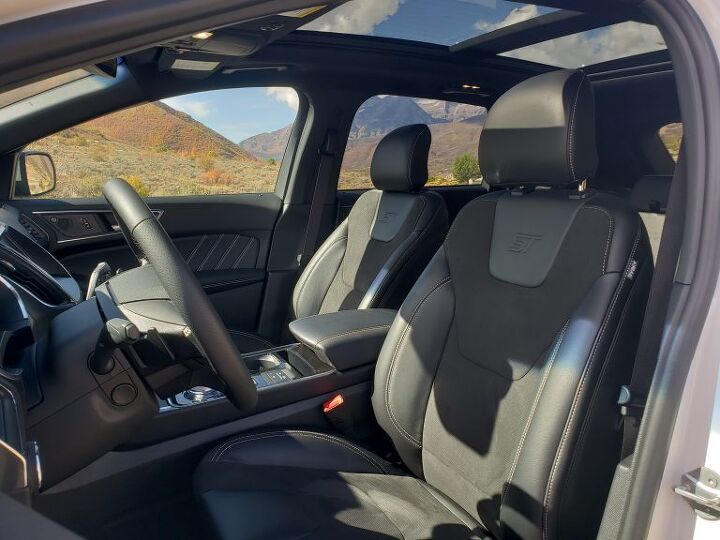






















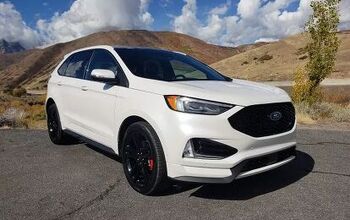

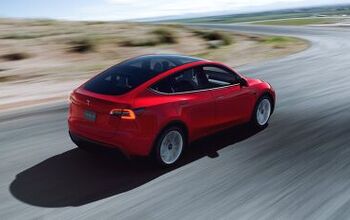
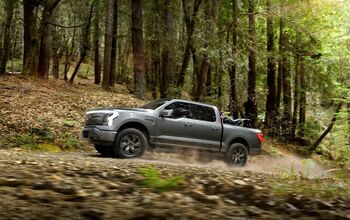




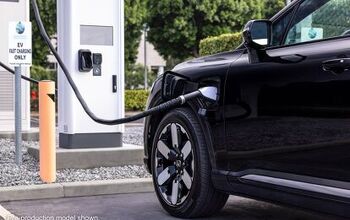

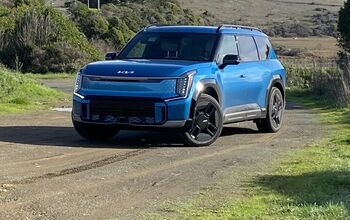
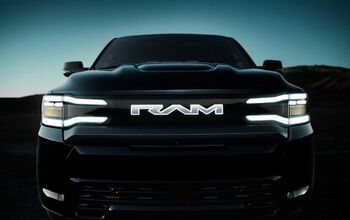
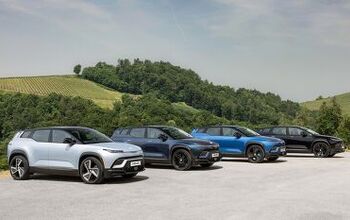
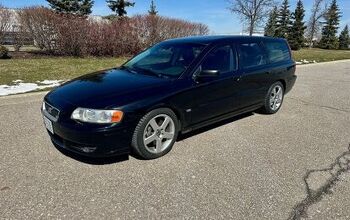

Comments
Join the conversation
I was kinda looking forward to this, bit honestly $50k for a loaded edge ST? I think the RDX A spec all wheel drive with technology package is only $45k. And I think the RDX A Spec is a direct competitor to the Edge ST. I think overall acceleration will be close and I think the Acura will out handle and out brake the ST- dont see the ST making a big impact - too much premium
I was kinda looking forward to this, bit honestly $50k for a loaded edge ST? I think the RDX A spec all wheel drive with technology package is only $45k. And I think the RDX A Spec is a direct competitor to the Edge ST. I think overall acceleration will be close and I think the Acura will out handle and out brake the ST- dont see the ST making a big impact - too much premium